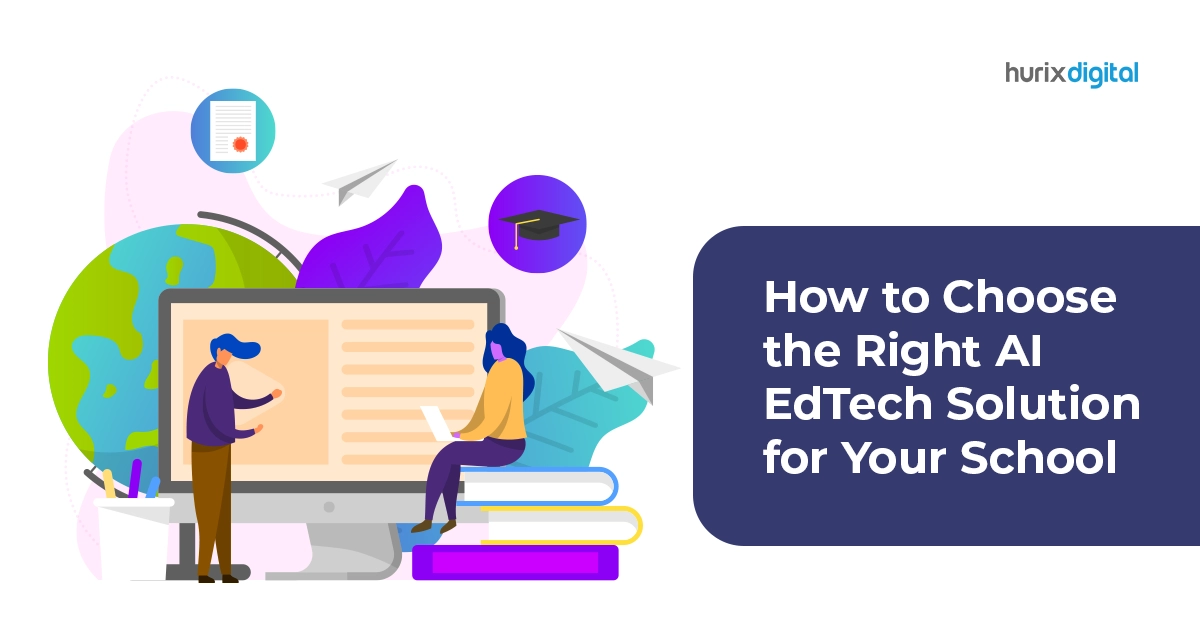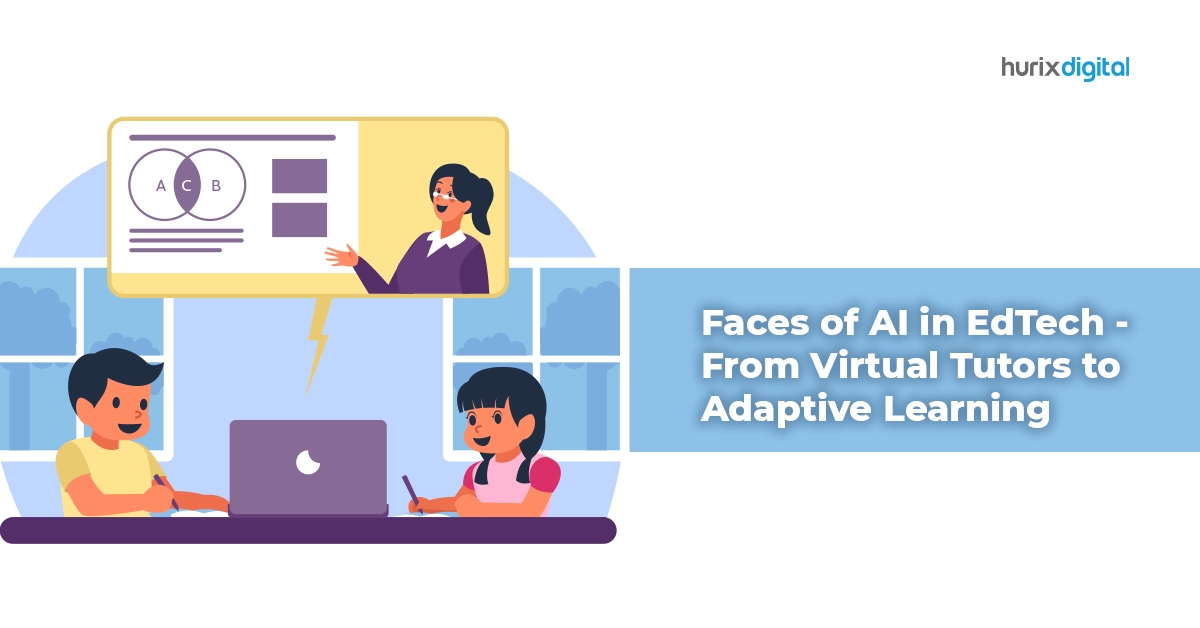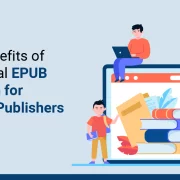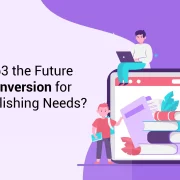
How to Choose the Right AI EdTech Solution for Your School?
Summary
Find guidance on selecting the most suitable AI-driven educational technology solutions for your school, focusing on enhancing teaching and learning experiences.
An unchangeable certainty is the knowledge of the emergence of artificial intelligence: irrespective of the economic climate and technological breakthroughs, it is here to stay!
If you consciously take note of this industry’s principal benefits and influences, you are cognizant of its swift expansion. The generative AI in the EdTech space has a CAGR of 40.5% in the duration of 2023-2032.
And it makes perfect sense—AI regulates all of the laborious, repetitious duties, freeing up human educators to concentrate on delivering superior instruction. It consequently serves as an excellent place to start when putting AI solutions into practice.
However, how correctly do you identify your preferred AI solution? It’s an intimidating but integral question.
Here, we’ll speculate about how your school can improve student learning through the use of AI-enabled EdTech solutions.
Table of Contents:
- How Does AI in EdTech Strengthen Educational Methodology?
- How Can You Determine the Most Innovative AI-Powered EdTech Solution?
- How are AI-powered Learning Platforms the Ideal EdTech Solutions?
- What are the Four Applications of AI in Education?
- Wrapping Up
How Does AI in EdTech Strengthen Educational Methodology?
Artificial intelligence in schools is a diverse and multidisciplinary outcome. Right from the analysis of data to predictive learning trends and patterns, artificial intelligence is pervasive and has gained traction on a global scale.
The Generative AI in EdTech market size is estimated to reach 5.3 billion dollars by the year 2032. AI-based educational software is helping learners with their goal-based objectives through the curation of learning materials and curricula that are personalized and facilitate interactive learning:
- The use of AI-enabled speech recognition tools and audio-to-text software has led to an increase in inclusivity and accessibility of the educational matter
- Simulations and immersive environments help cater to student-teacher interactions and self-paced learning processes
- Multi-language learners and students with learning disabilities or impairments can also benefit from the support and assistance provided by the AI tools
How Can You Determine the Most Innovative AI-Powered EdTech Solution?
You ought to consider the capabilities and ease of integration of the AI solution with the present setup when opting for the optimal one for your school. You should consider the following points when figuring out an AI solution:
- Does the AI solution integrate with your current teaching platform?
- What is the purpose of the platform to build skills or enable deeper learning?
- Is there any specialized training required for teachers?
- What skills do you want your students to develop using this tool?
- Can you get access to all features in the existing plan?
Also Read: Top 8 Mistakes Administrators Make While Choosing EdTech Solution
How Are AI-Powered Learning Platforms the Ideal EdTech Solutions?
There’s a significant upheaval in the EdTech sector with the preparation of classroom education enabled by technology. The learning management systems help further the medium of instruction and maintain the integrity of the learning systems.
For instance, with the help of optimized educational planning software, educators can build on previously presented lectures and lessons to create a curriculum that is more lucid. With a little guidance from the EdTech staff, you can edit, modify, or even create your lesson plan.
AI EdTech solutions have countless benefits for educational institutions, including a reduction in expenses beyond efficacy, greater flexibility in learning, and new opportunities for every pupil. Here’s how the learning platforms can serve as ideal EdTech solutions:
1. Mapping Educational Curriculum and Lesson Plans
The AI-powered learning platforms help to tailor content delivery mechanisms and curate plans in sync with the needs and requirements of learners. Educational curriculum design can be mapped out to suit learners at different levels.
2. Adaptive Learning Pathways
Students can learn at their own pace with every lesson that can meet individual needs and requirements. Teachers can monitor and track the progress levels without the fear of students falling behind or the inability to impart fair and equitable access to education for all.
3. Customized Learning Modules
The lesson plans can be specifically designed and built to be future-ready and scalable. Personalized learning with AI ensures that every student can derive maximum benefit from the learning modules and be adopted as bite-sized pieces of content.
4. Formative Assessments
Educators can assess students of diverse skill sets and fill in the gaps for learners regardless of their level and educational criteria. Automated grading and inclusive monitoring of the success metrics of the students help them strategize creatively and prepare better.
What are the Four Applications of AI in Education?
To provide students with a customized learning experience, the perfect AI platform should integrate the most recent advancements in machine learning, natural language processing, and knowledge representation technologies.
Teachers and students alike can use the platform, which allows them to customize the content to meet their specific needs.
1. Discussion Forums
AI tools enable teachers to keep tabs on virtual discussions as they happen so they can provide feedback immediately. It also helps them ensure everyone who participates understands concepts being discussed by their peers before moving on to fresh resources or material.
This is in contrast to traditional bulletin boards, which frequently require students to wait until they receive feedback from their peers or the teacher.
2. Detection of Plagiarism
Artificial intelligence (AI) tools possess a tendency to efficiently detect plagiarism in student papers, which can aid teachers in spotting imminent anomalies before they get out of hand.
Depending on the areas that require the most scrutiny, these detection tools can provide conscientious inputs and enhance feedback.
3. Intelligent Learning Systems
Intelligent learning systems that accommodate the different requirements and tastes of each learner can be developed by educators using AI tools.
This implies that every student, in every subject or topic area, always has access to their customized curriculum. Classroom management systems can track students’ progress based on important performance indicators.
4. Chatbots
Students can use these AI tools as autonomous assistants in seeking answers to questions they have about their courses or related subjects.
By giving students feedback on their tests or homework, they can also serve as virtual tutors. Likewise, student-to-student communication on course-related subjects is facilitated by feeds that have been integrated with bots.
Also Read: Know How the Latest Technology in Education Enhances Teaching Methods
Wrapping Up
To sum it all up, AI offers a lot to education. For classrooms and schools that are strapped for cash, AI and its many forms might offer the first step toward EdTech. For those who already invested in the EdTech space, AI provides an extra layer of learning that can supplement what’s already being done.
At Hurix Digital, we know that AI in EdTech is adaptable and scalable, and it can help both teachers and students reach every student in a classroom or school. With such benefits, AI is getting ready to change the education game—and we’re excited to see how the future unfolds.
Are you ready to redefine educational content and harness the power of deep learning models? Contact us today!





